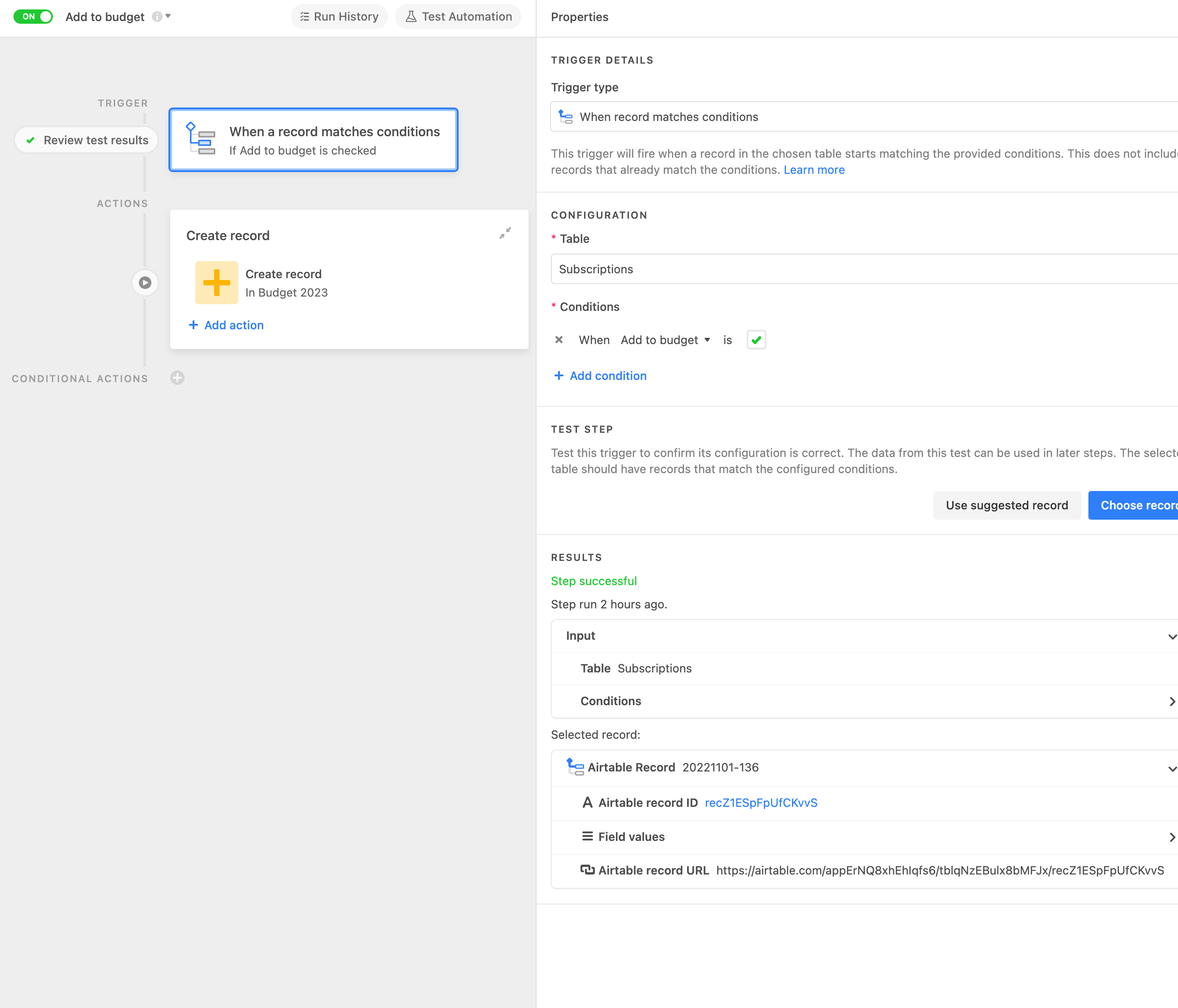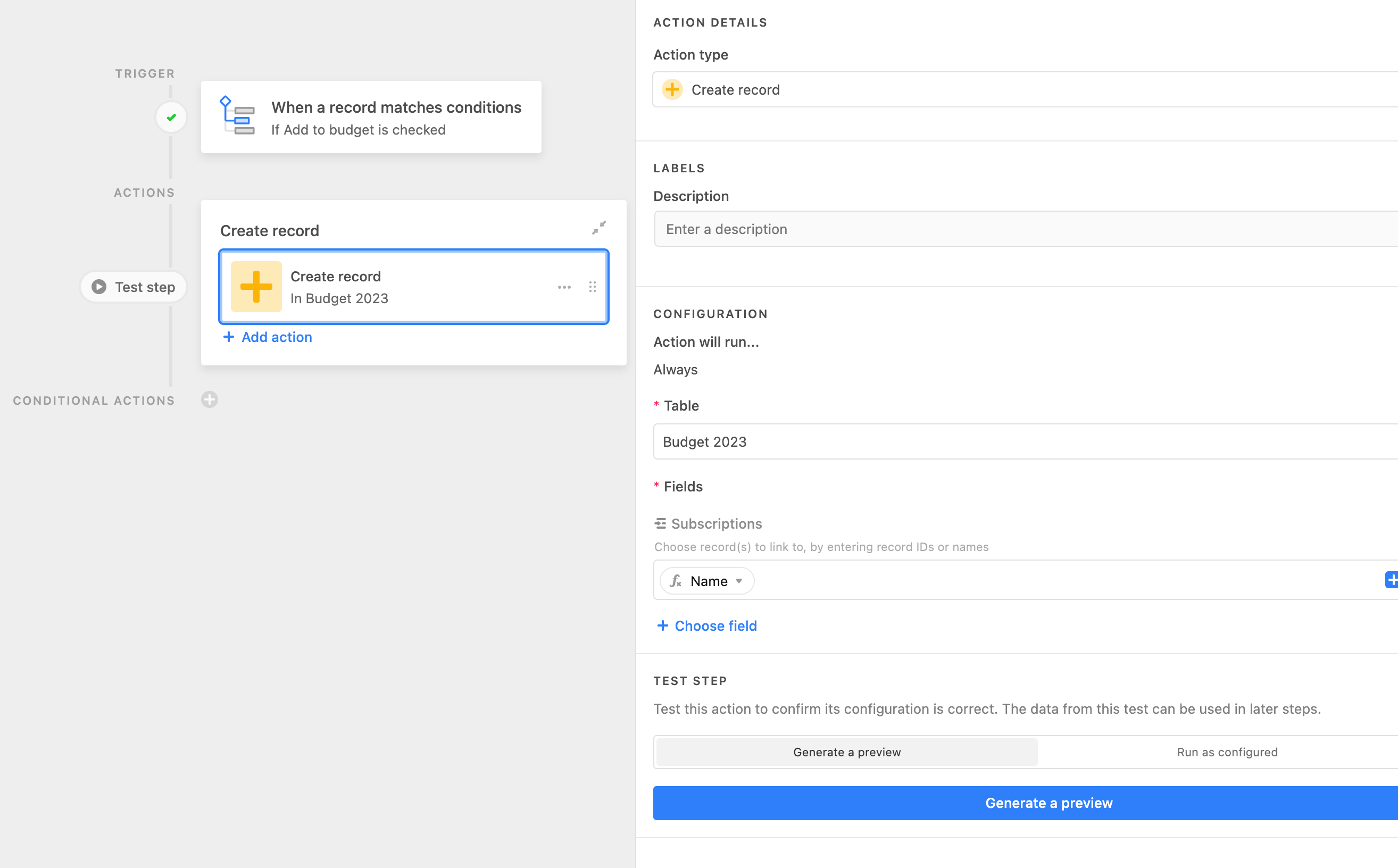Hello Airtable Community!
I am new in Airtable and have no coding skills so bear with me please.
I created a first rule that creates a record in Table B if a checkbox is checked in Table A:


That is working as expected.
Now, I want to create an automation rule that if I uncheck the same checkbox from Table A, it deletes the same record in Table B.
I’ve searched for article and found this one but don’t know how to make it work:
Can someone help me figure out how to make this work?
Thanks for your help :slightly_smiling_face:
Gabriel



